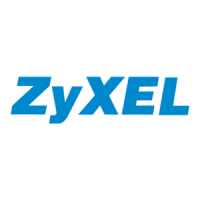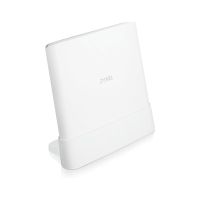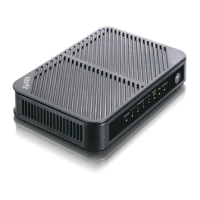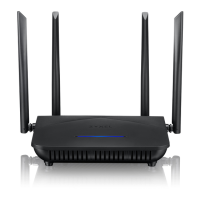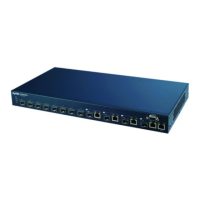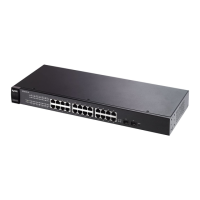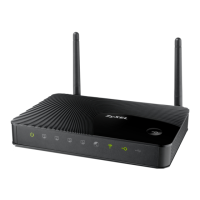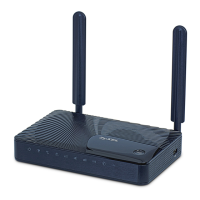Chapter 8 Broadband
AX/DX/EX/PX Series User’s Guide
207
Encapsulation Select the method of multiplexing used by your ISP from the drop-down list box. Choices are:
• LLC/SNAP-BRIDGING: In LCC encapsulation, bridged PDUs are encapsulated by identifying
the type of the bridged media in the SNAP header.
• VC/MUX: In VC multiplexing, each protocol is carried on a single ATM virtual circuit (VC). To
transport multiple protocols, the Zyxel Device needs separate VCs. There is a binding
between a VC and the type of the network protocol carried on the VC. This reduces
payload overhead since there is no need to carry protocol information in each Protocol
Data Unit (PDU) payload.
Service
Category
Select UBR Without PCR for applications that are non-time sensitive, such as email.
Select CBR (Continuous Bit Rate) to specify fixed (always-on) bandwidth for voice or data traffic.
Select Non Realtime VBR (non real-time Variable Bit Rate) for connections that do not require
closely controlled delay and delay variation.
Select Realtime VBR (real-time Variable Bit Rate) for applications with bursty connections that
require closely controlled delay and delay variation.
Peak Cell Rate
[cells/s]
Divide the DSL line rate (bps) by 424 (the size of an ATM cell) to find the Peak Cell Rate (PCR). This
is the maximum rate at which the sender can send cells. Type the PCR here.
Sustainable Cell
Rate
The Sustain Cell Rate (SCR) sets the average cell rate (long-term) that can be transmitted. Type
the SCR, which must be less than the PCR. Note that system default is 0 cells/sec.
Maximum Burst
Size [cells]
Maximum Burst Size (MBS) refers to the maximum number of cells that can be sent at the peak
rate. Type the MBS, which is less than 65535.
VLAN
Click this switch to enable VLAN on this WAN interface.
This field is not available if you select ADSL over ATM in the Type field and PPPoA or IPoA in the Encapsulation field.
802.1p IEEE 802.1p defines up to 8 separate traffic types by inserting a tag into a MAC-layer frame that
contains bits to define class of service.
Select the IEEE 802.1p priority level (from 0 to 7) to add to traffic through this connection. The
greater the number, the higher the priority level.
802.1q Type the VLAN ID number (from 0 to 4094) for traffic through this connection.
MTU (This is not available if you select ADSL over ATM in the Type field and PPPoA or IPoA in the Encapsulation field.)
MTU Enter the MTU (Maximum Transfer Unit) size for traffic through this connection.
IP Address (This is available only when you select IPv4 Only or IPv4 IPv6 DualStack in the IPv4/IPv6 Mode field.)
Obtain an IP
Address
Automatically
A static IP address is a fixed IP that your ISP gives you. A dynamic IP address is not fixed; the ISP
assigns you a different one each time you connect to the Internet. Select this if you have a
dynamic IP address.
Static IP Address Select this option If the ISP assigned a fixed IP address.
IP Address Enter the static IP address provided by your ISP.
Subnet Mask Enter the subnet mask provided by your ISP.
This is available only when you set the Encapsulation to IPoE or IPoA.
Gateway IP
Address
Enter the gateway IP address provided by your ISP.
This is available only when you set the Encapsulation to IPoE.
DNS Server (This is available only when you select IPv4 Only or IPv4 IPv6 DualStack in the IPv4/IPv6 Mode field.)
Obtain DNS Info
Automatically
Select Obtain DNS Info Automatically if you want the Zyxel Device to use the DNS server
addresses assigned by your ISP.
Use Following
Static DNS
Address
Select Use Following Static DNS Address if you want the Zyxel Device to use the DNS server
addresses you configure manually.
Table 45 Network Setting > Broadband > Add or Edit New WAN Interface (Routing Mode) (continued)
LABEL DESCRIPTION
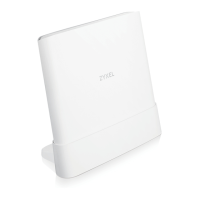
